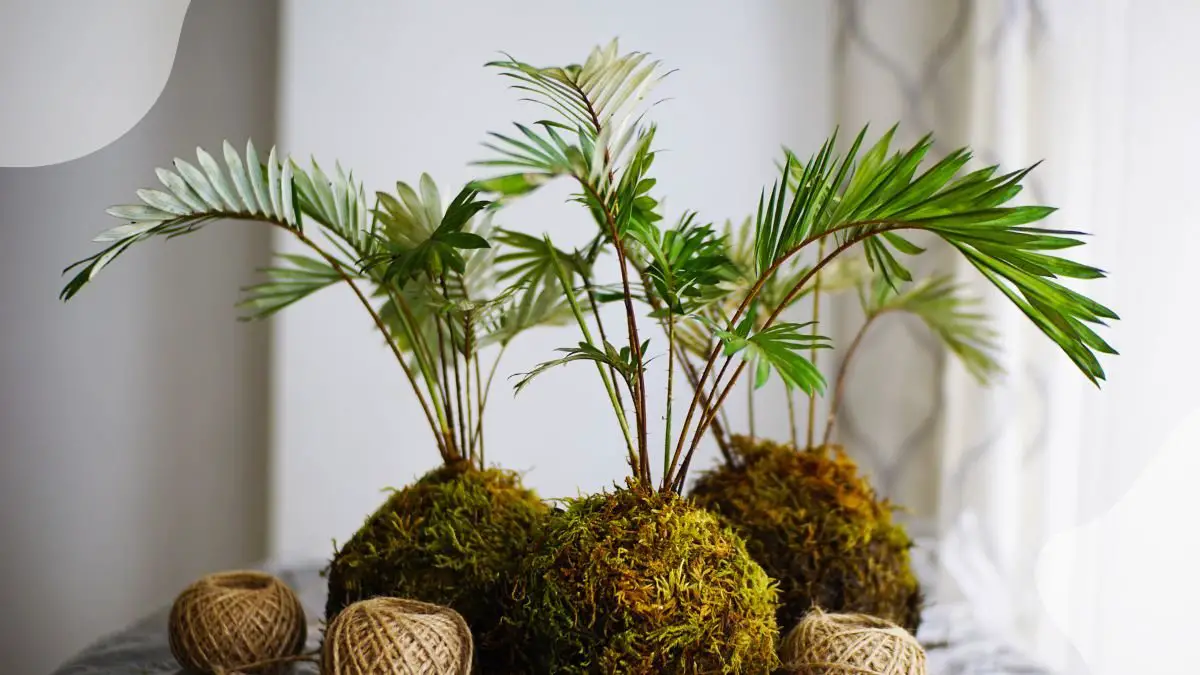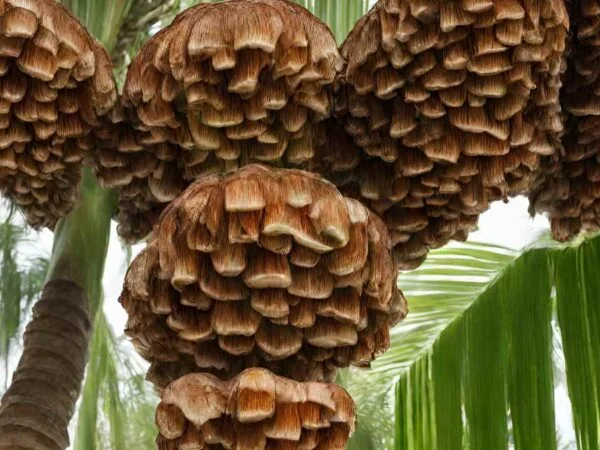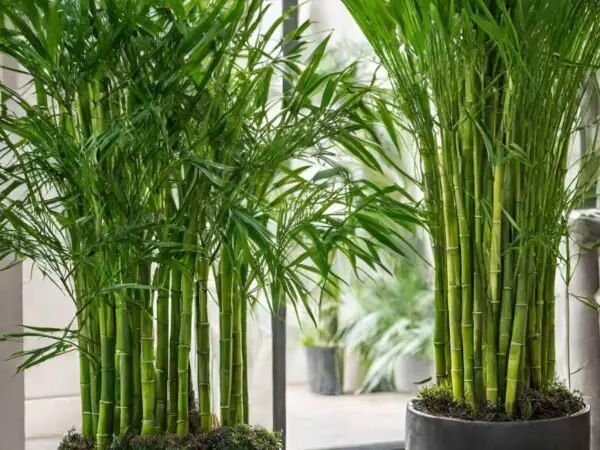When it comes to caring for your palm plants, noticing brown tips or leaf yellowing can be concerning. While these tropical palm beauties add a touch of green to any space, browning palm tree leaves can signal trouble with palm tree leaf problems. Understanding the causes and implementing simple solutions can revive your palm's lush appearance in no time.
Whether it's overwatering, inadequate sunlight, or nutrient deficiencies causing those pesky brown tips, we've got you covered with practical tips to bring your palm plants back to life. Say goodbye to unsightly brown edges and hello to vibrant, healthy foliage with our expert advice.
Key Takeaways
- Understanding Browning Tips: Recognize the signs of browning tips on your palm plants as an indication of potential issues.
- Addressing the Problem: Act promptly by identifying the root cause of browning tips and implementing appropriate solutions.
- Preventing Brown Tips: Maintain proper care practices like adequate watering, suitable lighting, and regular fertilization to prevent browning tips.
- Pruning Techniques: Learn and apply correct pruning techniques to promote healthy growth and prevent browning in your palm plants.
- Special Focus on Bamboo Palm: Understand the unique care requirements of Bamboo Palms to ensure they thrive and remain vibrant.
- Importance of Proper Pruning: Emphasize the significance of regular and proper pruning in maintaining the health and appearance of your palm plants.
Understanding Browning Tips
Common Causes
Palm plants' brown tips can stem from various factors. Improper watering and inadequate lighting are common culprits. Environmental conditions like humidity levels also play a significant role.
Watering Issues
Improper watering is a key factor in causing brown tips on palm plants. Overwatering can lead to root rot, while underwatering results in dryness and browning. Maintaining a consistent watering schedule is crucial for palm plant health.
Lighting Needs
Lighting conditions are essential for the well-being of palm plants. Insufficient light can hinder photosynthesis, leading to brown tips. Ensure your palm plant receives indirect sunlight to thrive and avoid browning issues.
Humidity Levels
Humidity plays a vital role in preventing brown tips on palm plants. Low humidity can cause the plant's leaves to dry out and turn brown. To maintain optimal humidity levels, consider using a humidifier or placing a water tray near the plant.
Addressing the Problem
Adjusting Water Schedule
To prevent brown tips on palm plants, adjust the watering schedule based on the plant's needs. Consider factors like soil moisture and drainage to ensure optimal hydration levels. Overwatering can lead to root rot, causing brown tips.
Improving Light Conditions
Enhance light conditions for healthier palm plants by placing them in bright, indirect sunlight. Avoid direct sunlight, which can scorch the leaves and result in browning. Monitor light exposure to prevent brown tips from developing.
Enhancing Humidity
Increase humidity levels around palm plants by misting the leaves regularly or using a humidifier. Adequate humidity helps prevent brown tips caused by dry air. Maintain consistent moisture levels to promote healthy leaf growth.
Fertilizing Right
Properly fertilize palm plants to avoid brown tips by using a balanced fertilizer specifically formulated for palms. Apply fertilizer according to the manufacturer's instructions to prevent nutrient deficiencies that can lead to browning. Regular fertilization supports overall plant health.
Preventing Brown Tips
Regular Care Tips
Taking care of palm plants involves regular watering, ensuring proper light exposure, and maintaining optimal humidity levels. These practices help in preventing brown tips by providing the necessary conditions for healthy growth, such as water. Consistent care routines, including watering, are crucial for the overall well-being of palm plants.
To prevent brown spots, it is essential to water palm plants when the top inch of soil feels dry. Overwatering can lead to root rot, causing stress and resulting in brown tips. proper drainage is vital to prevent waterlogging, which can also contribute to the development of brown spots.
Maintaining adequate lighting is another key aspect of regular care for palm plants. Placing them near a window where they can receive indirect sunlight helps in promoting healthy growth. Insufficient light can weaken the plant, making it more susceptible to issues like brown tips.
Regularly cleaning the leaves of palm plants is important to prevent dust accumulation, which can hinder their ability to absorb light. Wiping the leaves with a damp cloth helps in keeping them clean and free from any blockages that could lead to browning.
Monitoring Plant Health
Monitoring the health of palm plants involves observing their leaf color and texture, as changes in these aspects can indicate underlying issues leading to brown tips. Healthy palm plants have vibrant green leaves that are firm and turgid.
Signs such as yellowing or browning of leaves, along with wilting or drooping, can be early indicators of stress or nutrient deficiencies. By regularly inspecting the leaves and stems, you can identify any abnormalities and take timely action to address them.
Tracking the well-being of palm plants includes checking for any signs of pest infestations or diseases that could be causing brown spots on the leaves. Common pests like spider mites or scale insects can damage plant tissue, leading to discoloration and browning.
Pruning Techniques
When to Trim
Trim palm plants when brown tips appear, indicating potential issues with care or environment. Look for signs like browning leaf edges as indicators for necessary trimming. Timing is crucial for maintaining healthy palm plants.
How to Cut
Cut palm plants properly to treat brown tips without causing damage. Follow correct techniques to ensure the plant's health. The step-by-step cutting process effectively addresses brown tips.
Special Focus on Bamboo Palm
Ideal Conditions
Creating optimal conditions is crucial for palm plants to thrive. Ensure they receive adequate sunlight, ideally indirect light, and maintain consistent watering without overwatering. Providing proper drainage is essential to prevent root rot.
To prevent brown tips on palm plants, it's vital to maintain a humidity level of around 50-60%. avoid sudden temperature changes and drafts that can stress the plant. Adequate air circulation helps prevent fungal diseases that can lead to browning of palm leaves.
Key factors contributing to ideal conditions include proper fertilization, ensuring the plant receives essential nutrients. Regularly inspecting for pests like palm tree weevils and addressing them promptly is crucial for the plant's health. Pruning dead or damaged fronds also promotes overall plant vigor.
Specific Care Tips
Specialized care tips play a significant role in preventing brown tips on palm plants. Keep the plant's soil consistently moist but not waterlogged to maintain optimal hydration levels. Use a well-draining potting mix specifically designed for palm plants.
To promote the health of palm plants, consider misting the leaves regularly to increase humidity levels. Wipe the leaves gently with a damp cloth to remove dust and prevent pests from thriving. Avoid using harsh chemicals on the plant as they can damage the delicate palm leaves.
Specific care requirements for vibrant palm plants include regular pruning to remove dead or yellowing fronds. This practice not only enhances the plant's appearance but also improves its overall health by directing energy towards new growth. Consider rotating the plant occasionally to ensure even exposure to light.
Importance of Proper Pruning
Tree Care
Pruning is essential for maintaining the health and appearance of palm plants. By removing dead or dying fronds, you prevent the development of brown tips. This process allows the plant to allocate nutrients more efficiently.
Health Benefits
Proper pruning promotes air circulation and sunlight exposure within the palm's canopy. This helps in reducing the risk of fungal infections and pest infestations. Moreover, it encourages the growth of new fronds, leading to a healthier tree overall.
Regular Maintenance
Regular pruning is crucial for ensuring the long-term health and vitality of palm plants. By consistently removing old and damaged fronds, you stimulate new growth and prevent nutrient deficiencies. This results in vibrant, lush palm trees that thrive in their environment.
Rejuvenating Your Palm
Reviving Brown Leaves
Revive brown leaves on palm plants by trimming the damaged parts carefully. Ensure to cut at an angle to prevent water accumulation. Apply nutrients like nitrogen to promote healthy leaf growth.
Practical tips for addressing brown leaves include adjusting watering schedules. Ensure proper drainage to prevent waterlogged soil, a common cause of brown tips. Inspect the roots for any signs of rot and repot if necessary.
To rejuvenate brown leaves, consider applying a balanced fertilizer specifically formulated for palms. Monitor the plant's progress closely and adjust care routines as needed. Remember, patience is key in the recovery process.
Resolving Discoloration
Resolve discoloration issues by identifying the root cause, whether it's due to nutrient deficiencies or pests. Treat any underlying problems promptly to prevent further damage.
Tackle different types of discoloration by providing adequate sunlight and maintaining proper humidity levels. Consider using organic remedies such as neem oil for pest control on palm plants.
Address discoloration effectively by conducting regular inspections and implementing a consistent care routine. Prune affected areas carefully to encourage new growth and maintain overall plant health.
When to Seek Help
Signs to Watch For
Palm plants with persistent brown tips may signal underlying problems that require professional intervention. Look out for widespread browning, yellowing leaves, or stunted growth.
If your palm shows signs of distress, such as drooping fronds or mushy stems, it's time to seek expert advice. These symptoms could indicate issues like root rot or nutrient deficiencies.
Consulting a Specialist
When basic care measures fail to revive your palm plant, consulting a specialist becomes essential. A professional can diagnose and treat complex issues like pest infestations or diseases accurately.
Consider reaching out to a horticulturist or a botanist for tailored guidance on restoring your palm's health. Their expertise can help address specific issues causing the brown tips effectively.
Closing Thoughts
In understanding why your palm plants develop brown tips, addressing the issue promptly, and implementing preventive measures, you can ensure the health and vitality of your green companions. By mastering proper pruning techniques and focusing on specific varieties like the Bamboo Palm, you enhance the aesthetics and longevity of your indoor oasis. Remember, rejuvenating your palm through timely care and knowing when to seek professional help are vital steps in maintaining thriving plants.
Take charge of your palm plants' well-being by applying the insights shared here. Regular care, attention to detail, and proactive measures will not only prevent brown tips but also promote lush growth and vibrant foliage. Your dedication to nurturing your palms will result in a flourishing indoor garden that brings joy and tranquility to your space.
Frequently Asked Questions
How can I prevent brown tips on my palm plants?
To prevent brown tips on your palm plants, ensure proper watering by allowing the soil to dry out between waterings, maintain adequate humidity levels, provide sufficient light without direct sunlight, and avoid over-fertilizing.
What are the best pruning techniques for palm plants with brown tips?
When pruning palm plants with brown tips, focus on removing only the dead or damaged fronds using clean and sharp pruning tools. Trim back to the base of the leaf stem without cutting into the trunk to encourage healthy growth.
Why is proper pruning important for palm plants?
Proper pruning of palm plants is crucial to promote air circulation, remove diseased or dying foliage, enhance the plant's appearance, and stimulate new growth. It also helps prevent the spread of diseases and maintains the overall health of the palm.
When should I seek professional help for my palm plants with brown tips?
Consider seeking professional help for your palm plants if despite your efforts, the browning persists or worsens, if you are unsure about proper care practices, or if you notice signs of pests or diseases that require expert diagnosis and treatment.
Can rejuvenating my palm plants help with brown tips?
Rejuvenating your palm plants through proper care practices like correct watering, fertilizing, and pruning can help improve their overall health and reduce brown tips. By addressing any underlying issues and providing optimal growing conditions, you can revitalize your palms.
Image Source: Paid image from CANVA





